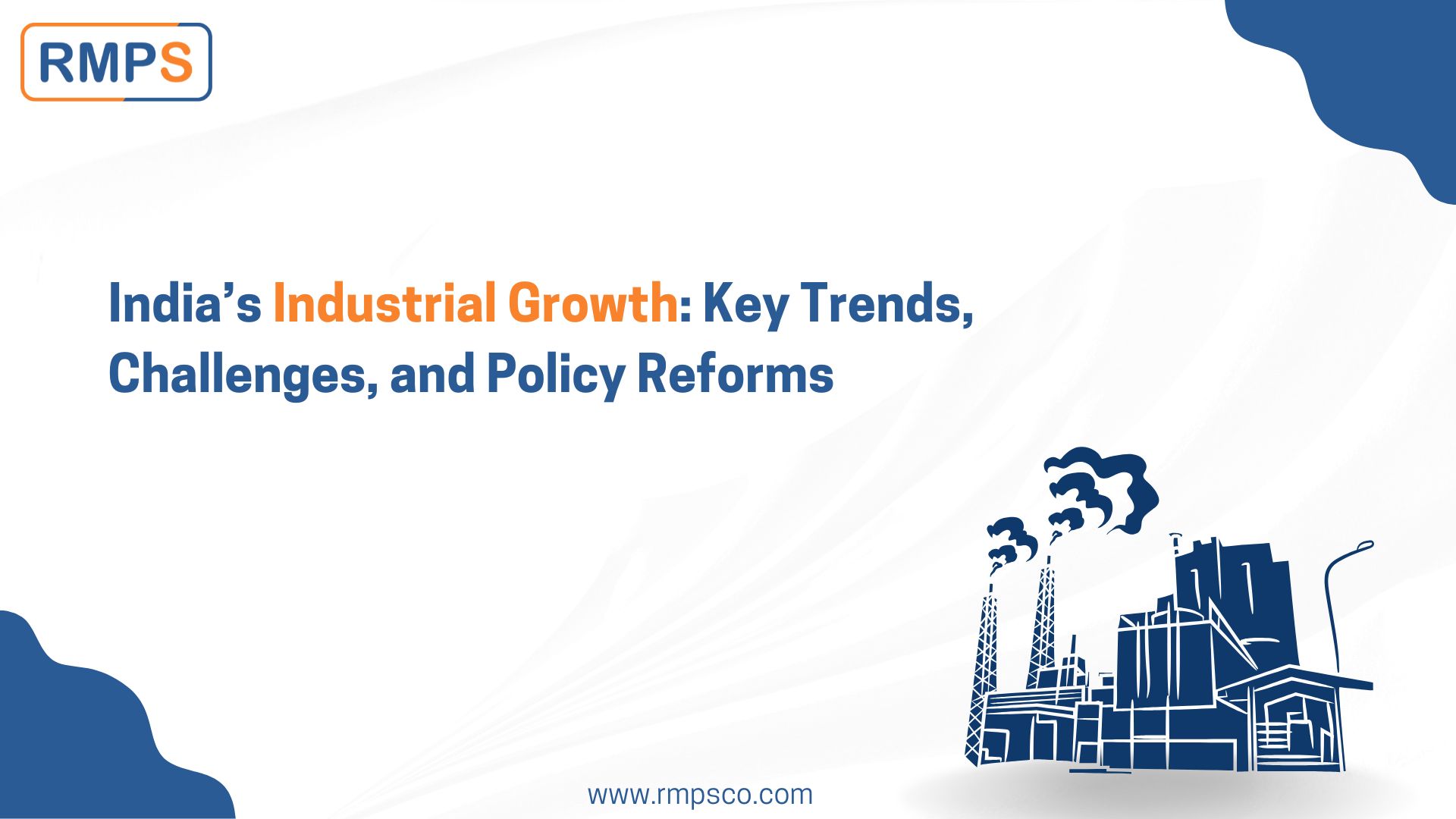
India’s industrial sector is evolving amidst global manufacturing shifts, supply chain disruptions, and trade uncertainties. The Economic Survey 2024-25 highlights India’s progress in manufacturing, infrastructure, MSMEs, and industrial reforms, positioning the country as a key player in global supply chains. However, external trade policies, high compliance costs, and structural inefficiencies pose challenges to sustained industrial growth.
This blog provides insights into India’s industrial performance, sector-wise trends, policy measures, and strategies to enhance manufacturing competitiveness.
1. India’s Manufacturing Performance: Global and Domestic Trends
Global Industrial Landscape
- Manufacturing in high-income countries is declining, with China and India gaining a larger share.
- India’s share in global manufacturing (2.8%) is significantly lower than China (28.8%), offering room for growth.
- Trade protectionism, geopolitical tensions, and global economic slowdown have impacted manufacturing exports.

Key Takeaways:
- India must diversify exports and integrate into global supply chains.
- Strengthening domestic industrial policies can improve global competitiveness.
2. Industrial Sector Growth: Key Drivers & Constraints
- Industrial Growth in FY25: Estimated at 6.2%, driven by electricity and construction.
- Challenges: Export slowdown, monsoon-related disruptions, and global trade uncertainties.
- Capacity Utilization: Improving, indicating rising production efficiency and demand stabilization.
Key Takeaways:
- Electricity and construction are driving industrial growth, while manufacturing exports need revival.
- Improved business reforms and regulatory simplification can boost industrial output.
3. Sector-Wise Industrial Developments
Cement Industry: Infrastructure-Led Demand
- India is the second-largest cement producer globally, with 639 million tonnes capacity.
- Government-led infrastructure projects (highways, railways, housing) are boosting demand.
Key Takeaways:
- India is nearing self-sufficiency in cement production.
- Sustainability initiatives are crucial for long-term industry growth.
Steel Industry: Infrastructure & Export Challenges
- Steel demand grew by 4.6% in FY25, driven by infrastructure projects.
- Exports declined due to global price disparities and increased domestic consumption.
Key Takeaways:
- Expanding infrastructure will drive domestic steel demand.
- India must strengthen export competitiveness through trade agreements.
4. Role of MSMEs in Industrial Growth
- MSMEs employ over 23.24 crore individuals and contribute significantly to GDP.
- Udyam Registration & Credit Guarantee Scheme have streamlined business formalization and financing.
- TReDS Platform is improving MSME financing through digital invoice discounting.
Key Takeaways:
- MSMEs are critical for employment and entrepreneurship.
- Expanding credit access and easing compliance will enhance MSME competitiveness.
5. Innovation, R&D, and Industrial Policy Reforms
R&D and Intellectual Property Growth
- Patent filings have doubled since 2014, ranking India among the top 10 globally.
- Trademarks and industrial design registrations are growing rapidly.
- R&D investment remains low at 0.64% of GDP, compared to China (2.1%) and the US (3.5%).
Key Takeaways:
- Increased private sector R&D investment is essential for industrial innovation.
- Government incentives should focus on applied research and commercialization.
6. State-Wise Industrial Performance and Business Reforms
- Top industrial states (Maharashtra, Gujarat, Tamil Nadu, Karnataka) contribute 43% of industrial GVA.
- Ease of Doing Business reforms are improving state-wise industrial competitiveness.
- States must focus on infrastructure, policy simplifications, and investment incentives.
Key Takeaways:
- Regional industrialization disparities require targeted policy interventions.
- Business-friendly reforms can attract private sector investments.
7. Conclusion: Policy Actions for Industrial Growth
The Economic Survey 2024-25 highlights India’s growing industrial strength while addressing global trade challenges, domestic supply chain issues, and regulatory burdens.
Strategic Priorities for Sustained Growth:
- Enhance Manufacturing Competitiveness: Strengthen global supply chain integration and export diversification.
- Expand MSME and Startup Ecosystem: Provide financial support and ease compliance.
- Invest in R&D and Digital Manufacturing: Boost industrial innovation and technological advancements.
- Simplify Business Regulations: Reduce compliance burdens to attract private investments.
- Encourage Green Industrial Growth: Focus on sustainability and carbon-neutral manufacturing.
India’s industrial roadmap must align with global trends, domestic demand, and long-term economic objectives. A balanced mix of policy reforms, investments, and innovation-driven industrialization will solidify India’s position as a global manufacturing leader.
LinkedIn Link : RMPS Profile
This article is only a knowledge-sharing initiative and is based on the Relevant Provisions as applicable and as per the information existing at the time of the preparation. In no event, RMPS & Co. or the Author or any other persons be liable for any direct and indirect result from this Article or any inadvertent omission of the provisions, update, etc if any.
Published on: February 1, 2025
